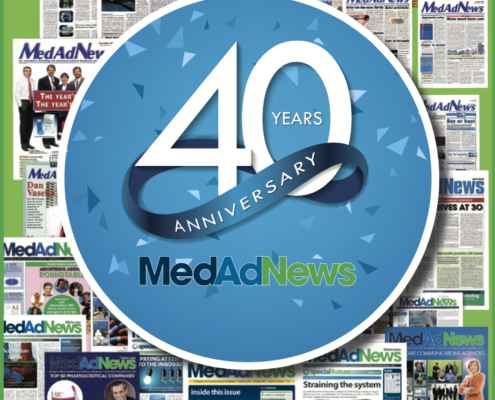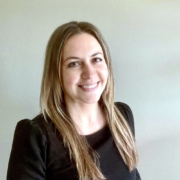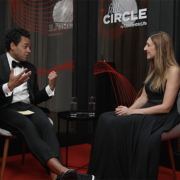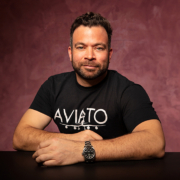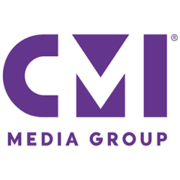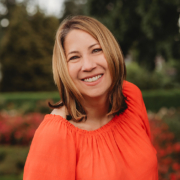Industry talent: Sometimes the apple should fall far from the tree
Industry talent: Sometimes the apple should fall far from the tree
The labor market has been forever changed by COVID-19. However, the changes in recruiting and retaining talent in pharma marketing and advertising started well before the pandemic. The traditional, linear career development path is not necessarily standard anymore, and the industry is looking in a variety of areas for talented professionals. Med Ad News asked several of its editorial advisory board members to reflect and weigh in on how the talent pool has changed over the years.
By Maria Fontanazza • [email protected]
Dennis Urbaniak, Orexo US: I’ve seen much more diversity of people’s background; the boxes are less rigid. Different people with different backgrounds applicable to what we’re looking at are coming to the table. And that’s a good thing. Someone who may have been a practitioner for years and joined an agency and can speak from the channel perspective — they may not be a traditional creative person or account or strategy person, but they know a tremendous amount about the actual channel on which you’re working and can speak to it in a language that the people I’m trying to work with can understand.
I think the whole marketing world has changed a lot where there are a lot of people who have done a lot of different work with clients in the real world around experience and the understanding of experience and design. That’s becoming more of a standard regardless. It’s more of the core group that comes together and can speak that language. They may not all be experts, but they know the principles and how they fit, and they can articulate it in a way that I can see it from my business point of view to address a need that I have or my customers have.
At the same time, the competition on the agency and the support side — especially over the past two years — is at a level of speed, change, and intensity that I’ve never seen in my almost 30-year career. Right now finding the individual that can speak with enough core understanding of the business and also represent the different capabilities of an agency is at a premium. You have not only the agency groups out there looking for people who can do that, but you also have a lot of consulting firms and boutique specialty firms. A lot of the different participants in health care are looking for that similar profile; even if you look at digital health, last year there was a record number ($16 billion+) in new money towards startups. And a lot of the startups are saying they don’t need more engineers per se but they need business people who understand the market and the space who can then translate what we’re doing from a technical and strategic point of view. The profile of the person who can sit on the fence and look at both sides and speak a common language — that’s where I’m seeing tremendous competition for talent. If you think about it, it’s an incredibly important skill that can have a foundational effect on how you build a business — whether you’re a client or a client partner. It used to be those were the top folks — the partners and the CEOs — but I think the demands for that skill are more at a middle level, because you need to have people who can roll up their sleeves and do the day-to-day work.
In our industry of marketing and advertising — whether you are a client or a service company — I would encourage people to look for very different places to bring talent into the organization. The thing about health care is that there’s always a tie and a personal passion and connection. We’re finding you can bring people in from different skill sets and industries, and they can transition successfully because of the way we need to work now. I hope that all of us will continue to open our minds to a different talent profile versus the traditional one we have right now. When you improve the diversity of a team, it always produces a better result.
Kim Johnson, Ogilvy Health: I have seen the talent pool diversify over the years, which has had a very positive impact for the industry overall, as well as healthcare marketing and advertising. In creative environments on the agency side, talent diversity for ideation and creativity is essential, if not crucial.
We have also fundamentally changed the ways we work in recent years. Collaboration is at the heart of our business, and that includes collaboration between our expert agency teams and with our clients. McKinsey issued a recent article entitled “Great attrition or great attraction? The choice is yours.” The piece highlights the importance of workplace interaction vs. transaction. Trends suggest there is a greater demand for more flexibility in how we spend our time and an increased desire for meaningful, purpose-driven work. The factors that are important to employees are shifting and therefore our workplace strategies must follow suit. Our efforts are also heavily focused on opening new paths to attract diverse talent to our industry. We know that equity is a journey, diversity makes us better and that we cannot do or be anything without belonging. Our efforts are increasingly concentrated on opening new avenues to attract a broader, more diverse talent base to our industry.
Jay Carter, AbelsonTaylor: That’s one of my passion projects. It was complex enough back in the old days when you needed an account person to interact with a customer. You needed a writer, you needed an art director, you needed a creative director to tie it all together, and then you needed production. Today, because we use so many different channels to reach patients, it’s critical to have professionals like engagement strategists to articulate what the most effective, lowest cost ecosystem to interact with a customer is. You need someone who is really good at data to make that work. You still need a writer and an art director for the core content, but there are so many other people who get into the process to make it shine. The consumer [industry] had account planners and VOC 40 years ago, but pharma didn’t really start to do it until 25 or 30 years ago, and now I can’t picture life without a strong planner on my team because they add so much value in looking at what the customer has to say in a careful, considered fashion, and synthesizing the right message to respond to that.
The other thing obviously going on right now is that we have a talent pool that is too small for all the projects that need to get done, and virtually everyone is scrambling to have staff that makes things happen. I think that will eventually even itself out.
[On entry-level talent]: This is where each of the agencies has gone to fix it downstream, but right now there is a great lack of the mid-level folks just to get the work done. That’s where all the horse trading is happening. I think it is re-encouraging a lot of shops to want to be a good place to work. As an owner, we try all along to be that, and I think we’ve had some success of keeping people happy where we’re at, but we’ve certainly had turnover as well.
Chris Esposito, Janssen Pharmaceutical: [From the sales role perspective] I’m coming from an era of when you had people who were decades-deep in experience with cardiovascular disease or oncology products; now you see much more movement between the therapeutic areas and between companies. It’s a much more mobile workplace. While we still value experience in one therapeutic area, we are also looking for innovation and different ways of approaching and dealing with customers, and you may have to look outside one therapeutic area to get that information.
Mike Myers, CrowdPharm: A lot of really talented people were avoiding our industry for a long time. That has hurt us on certain levels on both the client side and on the agency service side. I have seen the pendulum swing back. More qualified people are looking at the pharmaceutical industry and even advertising and communications and those professional support services more than they did 10 years ago.
Because of technology, you can tap into more of today’s talent pool. We can work in real-time because of the tools that are available, so the talent pool no longer has to be in the building; it can be anywhere — people want that flexibility. I think that’s a healthy change.
Neil Matheson, Atlantis Health: Talent is a major issue for the industry — I mean the vendor side, the agency side of the business. One of the things that has happened in the last 15 years is the emergence of recruiters hired by agencies to manage the recruitment of talent. That’s created a lot of movement of talent from agency to agency, which is a problem because it forces agencies to look at talent retention, how they treat people in the workplace, and what type of culture and environment they are creating. I think that’s a critical factor in why many agencies are successful — it’s because they create a good culture and are able to retain talent.
There is and will always be a talent shortage because the outsourced vendor agency well is constantly growing and expanding, and there just aren’t enough people to fill all the positions that are available. I created a relationship with the Philadelphia College of Science and Textiles, creating programs where new graduates could come and become interns, and then become permanent employees. But one of the great problems is you hire great employees and train them and then they are recruited into other agencies. I always looked at it as, if you’re training great people and they feel the need to go somewhere else, then you should be proud of the fact that you helped develop that talent.
| Maria Fontanazza is the director of content, Med Ad News and PharmaLive.com. |

